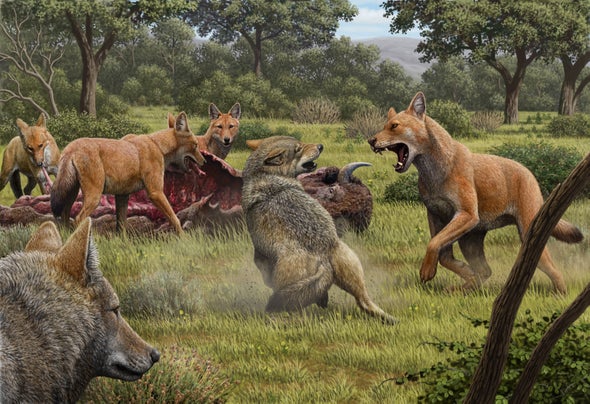The extinct giant canids were a remarkable example of convergent evolution

Dire wolves are iconic beasts. Thousands of these extinct Pleistocene carnivores have been recovered from the La Brea Tar Pits in Los Angeles. And the massive canids have even received some time in the spotlight thanks to the television series Game of Thrones. But a new study of dire wolf genetics has startled paleontologists: it found that these animals were not wolves at all, but rather the last of a dog lineage that evolved in North America.
Ever since they were first described in the 1850s, dire wolves have captured modern humans’ imagination. Their remains have been found throughout much of the Americas, from Idaho to Bolivia. The La Brea asphalt seeps famously document how prey animals mired in tar lured many of these ice age predators to a sticky death. The dire wolves’ tar-preserved remains reveal an imposing hunter up to six feet long, with skull and jaw adaptations to take down enormous, struggling megafauna. Though these canids had clearly evolved to handle the mastodons, horses, bison and other large herbivores then roaming the Americas, skeletal resemblances between dire wolves and the smaller gray wolves of today suggested a close kinship. It had long been assumed that dire wolves made themselves at home in North America before gray wolves followed them across the Bering Land Bridge from Eurasia. Now some well-preserved DNA seems to be fundamentally changing the story.



Comments
Post a Comment